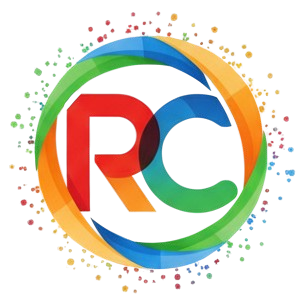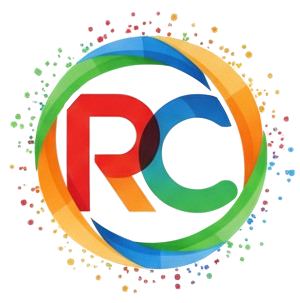How to Choose the Right Web Development Framework for Your Project
Choosing the right web development framework for your project is like picking the foundation for your home — it impacts everything that comes after.
In a world where technology is evolving rapidly and user expectations are sky-high, selecting the wrong framework can slow your development, inflate costs, or compromise performance. But with the right one, you unlock efficiency, flexibility, and long-term success.
So how do you choose the right framework — and what should you consider beyond buzzwords and popularity?
Let’s break it down.
🧱 What Is a Web Development Framework?
A web development framework is a pre-written collection of code and tools that helps developers build websites and web apps more efficiently. It provides a structure for organizing code, handling common functionalities, and following best practices — so developers don’t have to start from scratch every time.
There are two main types:
-
Front-end frameworks – for what users see and interact with (e.g., React, Angular, Vue.js)
-
Back-end frameworks – for server-side logic, databases, and APIs (e.g., Node.js, Laravel, Django)
Some full-stack frameworks handle both ends.
💡 Why Framework Choice Matters
Your framework choice influences:
-
Development speed
-
Performance and scalability
-
Security features
-
Community and support
-
Cost of maintenance and hiring developers
In short, it’s not just a technical decision — it’s a strategic business choice.
🧭 Step-by-Step: How to Choose the Right Framework
1. Define Your Project Goals Clearly
Before picking a framework, ask:
-
Is it a single-page app, e-commerce site, blog, or enterprise-level dashboard?
-
Do you need real-time features (like chat or live data)?
-
Will it scale in the future?
-
Are speed, performance, or SEO critical?
The more you define your goals upfront, the better you can match them to a framework's strengths.
2. Choose Between Front-End, Back-End, or Full-Stack
Depending on your needs:
-
For highly interactive UIs → look into React, Vue, or Angular
-
For server-heavy applications → consider Node.js, Django, or Laravel
-
For full-stack development → explore Next.js, Meteor, or Ruby on Rails
💡 Example: If you're building a blog, WordPress or Laravel might suffice. But for a real-time trading app, you'd need something like React with Node.js or even a custom stack.
3. Consider Developer Experience and Team Skillset
Ask yourself:
-
What languages does your team already know? (JavaScript, PHP, Python?)
-
Is it easy to hire developers with experience in this framework?
-
How steep is the learning curve?
For example:
-
If your team knows JavaScript well, React or Express.js will feel natural.
-
If your developers prefer Python, Django or Flask is a better fit.
💡 Pro tip: Never pick a framework that looks powerful but lacks in-house expertise — it’ll cost you in delays and debugging.
4. Evaluate Community Support & Ecosystem
A strong community = more tutorials, faster problem-solving, and continuous updates.
Look for:
-
Regular GitHub commits and version releases
-
Plenty of Stack Overflow support
-
Well-documented APIs and developer tools
-
Active plugin/module ecosystem
React, Laravel, and Django are known for their thriving communities.
5. Assess Scalability & Performance Needs
If you expect high traffic, large databases, or growing features, choose a framework that:
-
Handles concurrency efficiently
-
Supports caching and database optimization
-
Offers flexibility in architecture
For example:
-
Node.js with MongoDB is ideal for fast, scalable apps
-
Django can handle large-scale enterprise apps, especially with PostgreSQL
💡 Avoid using lightweight frameworks (like Flask or Express) for massive systems unless paired with robust architecture planning.
6. Check Security Features
Security isn’t optional. A good framework should offer:
-
Built-in protection against SQL injection, XSS, CSRF, etc.
-
Secure authentication modules
-
Easy integration with modern encryption and API standards
Django and Laravel have strong built-in security features, while others like Express.js rely more on third-party middleware — which requires more configuration.
7. Plan for Long-Term Maintenance
Some frameworks are trendy but fade fast. Others are tried-and-true.
Ask:
-
Is the framework still actively maintained?
-
Will it be relevant 5 years from now?
-
Does it offer backward compatibility for future updates?
Using a niche or outdated framework can leave you stranded when tech evolves.
⚖️ Quick Comparison: Popular Web Development Frameworks
| Framework | Type | Best For | Language |
|---|---|---|---|
| React | Front-End | Interactive UIs & SPAs | JavaScript |
| Angular | Front-End | Large-scale enterprise apps | TypeScript |
| Vue.js | Front-End | Lightweight projects & startups | JavaScript |
| Node.js (Express) | Back-End | Real-time apps, APIs | JavaScript |
| Django | Back-End | Secure, scalable platforms | Python |
| Laravel | Back-End | Web apps, CMS, e-commerce | PHP |
| Next.js | Full-Stack | SEO-friendly, server-rendered apps | JavaScript |
| Ruby on Rails | Full-Stack | MVPs and fast prototypes | Ruby |
🧠 Final Thoughts: Choose With Purpose, Not Hype
There’s no one-size-fits-all when it comes to frameworks. The right one depends on your goals, your team, your timeline, and your future plans.
In other words:
Don’t choose the most popular framework. Choose the most strategic one for your business.
Take the time to evaluate, consult your developers, and think long-term — because a solid foundation leads to scalable success.
🔗 Need Help Choosing or Building Your Web Stack?
At Brand-Designing.com, we don’t just build websites — we help businesses choose the right technology stack to grow smarter and faster. Whether you need a simple landing page or a robust digital platform, our dev team will guide you from planning to launch.
Let’s build smarter, not just faster.







